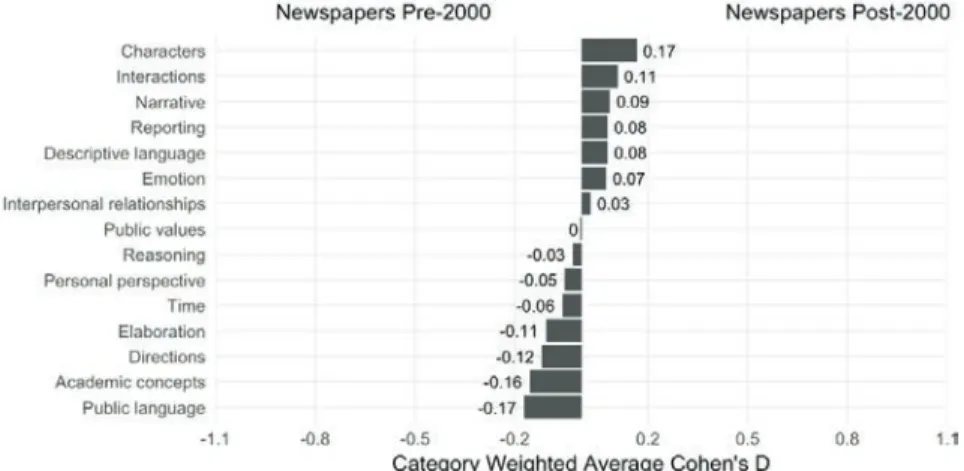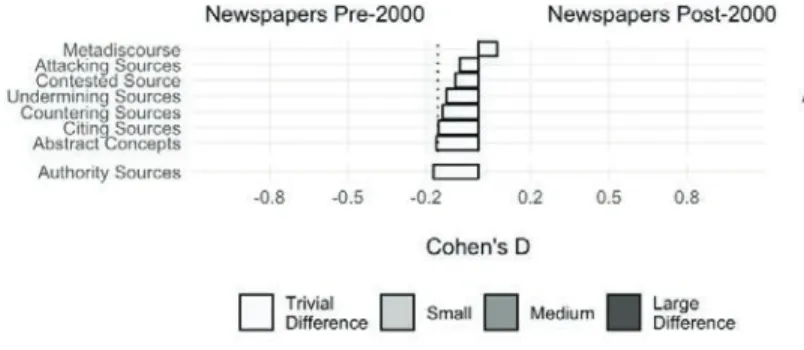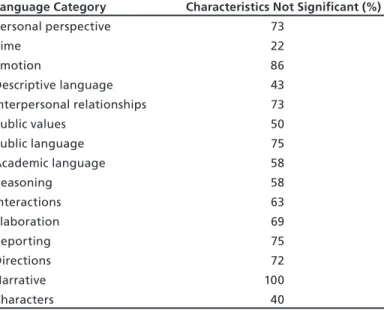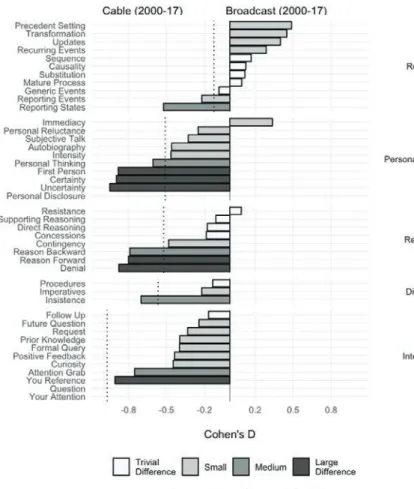The RAND Corporation is a research organization that develops solutions to public policy challenges to help make societies around the world safer and more secure, healthier and more prosperous. RAND is a research organization that develops solutions to public policy challenges to help build communities around the world. RAND's research findings and recommendations are based on data and evidence and therefore do not necessarily reflect the political preferences or interests of its clients, donors or supporters.
Summary
In the years after 2000, cable programs consolidated their position as the main source of news for the United States. We found that while much of the language and tone of reporting in the New York Times, Washington Post, and St. news presentation and prime-time cable programming in the post-2000 era.

Acknowledgments
Introduction
Before looking specifically at changes in news presentation, it's helpful to examine some of the ways the media ecosystem has changed more broadly over the past 30 years. First, there is research that examines how the changing economics of the media industry, as described, have affected the presentation of news over time. As noted, we also aim to address some of the remaining gaps in the existing news presentation literature.
Data and Methodology
We collected transcripts of major news programs on the American Broadcasting Company (ABC), Columbia Broadcasting. Different categories of our taxonomy capture different aspects of language in a given text corpus. However, the synthesis and interpretation of these differences is more comprehensive and the "human" part of the process.

Changes in Newspaper Reporting over Time
We focus on statistically significant comparisons; thus, there is a statistically significant difference between the two samples for each of the linguistic comparison items we present. We also provide some discussion of those factors that are the same across the two blocks of text at the level of the parent category. It has a Cohen's D of just over 0.2 on the positive side of the axis, indicating that it is more common in the post-2000 period and that the effect is of moderate size; that is, there is more neutral attribution (descriptions of individual actions and behaviors without value attributions) in the post-2000 sample.
Bars on the right side of the figure identify parenting categories that are more common in the post-2000 period; bars on the left side identify overarching categories more common in the pre-2000 period. Bars oriented to the right of the figure identify factors more common in the post-2000 period; those on the left side of the figure are more common in the period before 2000. In addition to being characterized by the use of imperatives, the national newspaper before 2000 sample is also characterized by predictions about the future, immediacy and abstract concepts.
The following passage provides an example of the use of abstract concepts (in this case, in a discussion of tax policy change) and focus in a discussion of the future (in this case, policy changes). The period after 2000, based on the analysis of the sample of national newspapers, seems to have a somewhat heavier use of personal pronouns, which mainly reflects the more narrative and subjective character of the journalism written during this period (Table 3.7). As in the case of the full sample, the main trend in the sample of national newspapers is one of stability, despite various differences.
For each of the three newspapers in our sample, we compared content before 2000 with content after 2000.

Differences in Television News
Rows extending to the left (negative values) highlight language categories that are more common in the pre-2000 period; those extending to the right (positive values) identify characteristics that are more common in the post-2000 period. NOTE: Positive columns indicate factors that are more common in the post-2000 period; negative lines indicate factors that were more common in the period before 2000. In the period before 2000, television news was more likely to use academic language (including abstract concepts), complex reasoning about causality and contingencies, and argumentative reasoning (denying and resisting counterarguments ).
So we have to wait and see." Finally, this type of talk-news in the post-2000 period contains personal pronouns of the characters they describe. Other changes in news broadcasting in the post-2000 period are an increase in descriptive language and more sequencing—for example, when newscasters speak through visuals and videos. A good example of the more complex and rich reporting observed in the period before 2000 is the following medical malpractice story.
Figures 4.3 and 4.4 visually show the results of the RAND-Lex analysis comparing cable programming to broadcast television news over the period 2000-2017. Broadcast news is richer in the academic language of abstract concepts; prime-time cable programming has the academic language of metadiscourse, a feature associated with orality ("basically" and "I find" types of verbal interpretation of one's position). Each of the linguistic characteristics of the descriptive language, reasoning style, narrative and characters are statistically significant.
Broadcast journalism in the post-2000 period differs from pre-2000 in ways broadly consistent with the newspaper observations in Chapter Three.

Comparing Print and Online Journalism
NOTE: The rows on the left side of the axis indicate those features that are more common in the web sample; the columns to the right of the axis identify the factors that are more common in the newspaper sample. Newspaper coverage from 2012-2017 features characters and narrative, contextualized with descriptions of the material world and time-dated. When comparing online journalism and newspapers, we found relatively few areas of overlap.
All features present in one analysis and not in the other are in bold text. Turning to the cross-sample differences, there are three linguistic characteristics that emerge in the full analysis and not in the reduced sample analysis. First, there are more source citations (a more academic style) in the newspaper journalism of this sample than in the online journalism of this sample.
Second, online journalism in the reduced sample contains more emotion (specifically general positivity, which is absent in the newspaper journalism sample in this case) and more references to public virtue (e.g., happiness, fairness, human rights). NOTE: All features that appear in one analysis and not in the other are in bold. Finally, we consider areas of agreement between the online and newspaper journalism in the reduced sample.
The greatest areas of similarity occur in the use of and references to public values, the use of elaboration (numbers, examples, descriptors) and references to personal interactions.
Summary and Conclusions
In addition, the use of emotional appeals, subjective reporting, and argumentation increased over time in the sources we examined. Changes over time in the language style of television broadcasts (pre- and post-2000) generally reflect the contrast between broadcast news and prime-time cable programming: a shift toward a more subjective, more conversational, and more deliberative approach to providing news. The style of post-2000 television news is ultimately somewhere between broadcast journalism in the pre-2000 period and cable programming in the post-2000 period.
It is not the case that the prime-time cable programming or the online journalism in our sample is entirely devoid of detailed, contextual and event-based reporting or that print journalism in the pre-2000 period lacked any emotional appeals or advocacy-oriented. language in news coverage. Therefore, we find evidence of a more widespread use of opinion and subjectivity in the presentation of news than in the past. Structural Relationships Among Users' Motives, Web Site Types, Information Credibility, and Trust in the Press,” Computers in Human Behavior, Vol.
In particular, trends towards subjective journalism with a more personal perspective and more emotion can influence trust in the news media. This report documents differences in the way news is presented in different types of media and how print and broadcast journalism has changed over time. These are just some of the many possible analyzes that can be performed to explore the broader implications of changes in news presentation over time and of cross-platform differences.
Documenting empirical differences in news presentation over time and across platforms in the US.
About RAND-Lex
Department of the Air Force, CI Jonathan Hope and Michael Witmore, "The Hundredth Psalm to the Tune of 'Green Sleeves': Digital Approaches to Shakespeare's Language of Genre," Shakespeare Quarterly, Vol. 8 An example of specific contextual use that was systematic enough to require adjustment was the variable for "Rumors and Media", in which the proper noun "The Buzz". Subjective time Experiencing time from within (“Seems like just yesterday”) Looking ahead The use of words that indicate the future (eg to, to, look forward . to, will be in New York) Prediction of the.
Anger Use of words related to anger Fear Use of words related to fear Sadness Sadness (negative emotion). Acknowledgment Using words that publicly express gratitude to people (eg, I acknowledge your help, thank you) (Acknowledgments without gratitude fall into the categories of apologies and concessions.). Sources of authority Public or institutional authorities already known and respected in the culture (eg, "founders," "courts," "prophet," "properly authorized").
Backward Reason The use of words that show a chain of thought moving backwards from conclusion to premise, effect to cause (eg, because, on account of the fact, on the grounds that). Future Question Using questions beginning with the epistemic modal "will" to indicate that the question is about a future state. Updates Reporting an update (eg, "have now", "announced that") Setting a precedent Using words that report historical "firsts".
Narrative verbs The use of past tense verbs that show the action of a story (eg, came, saw, conquered).

ANOVA Results





